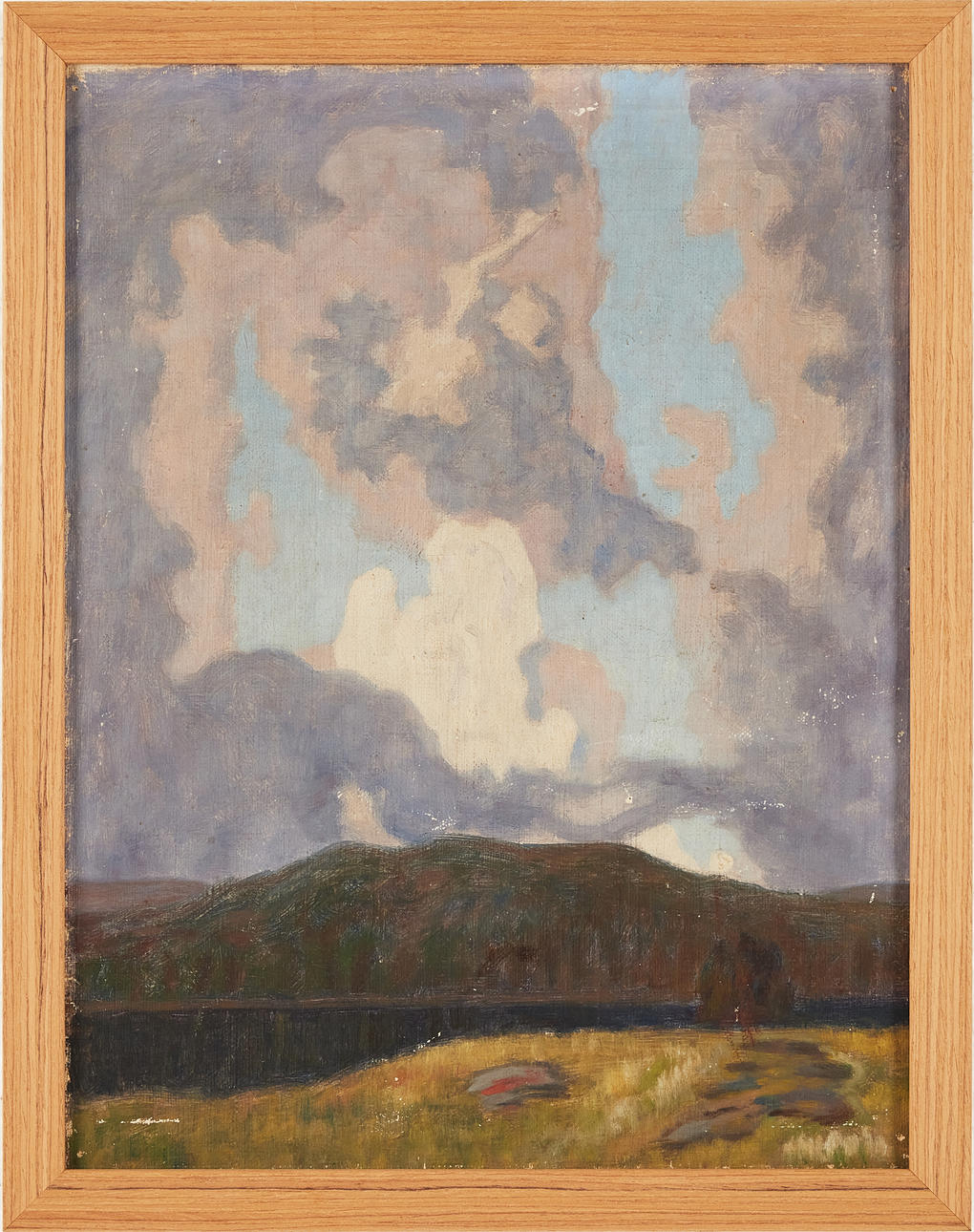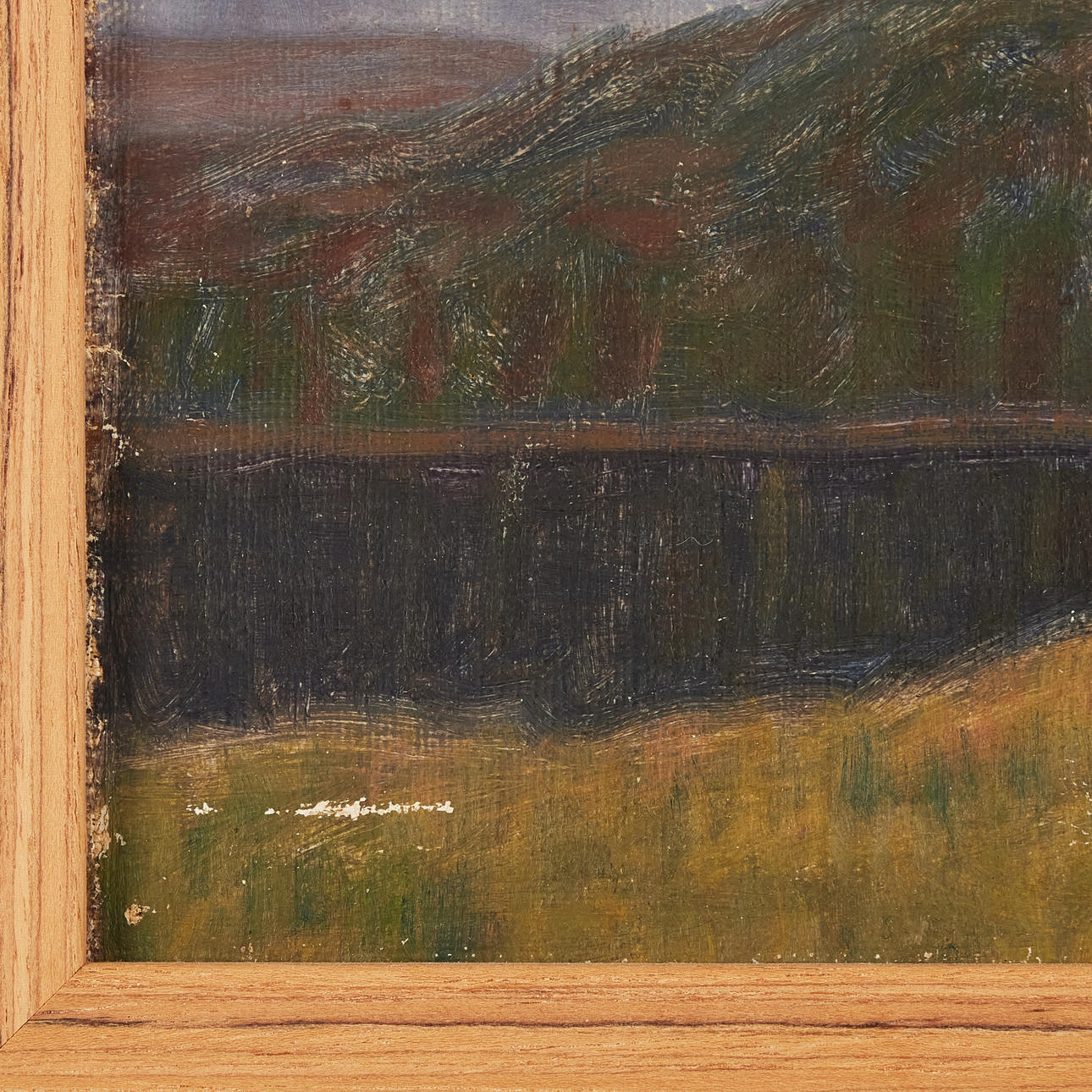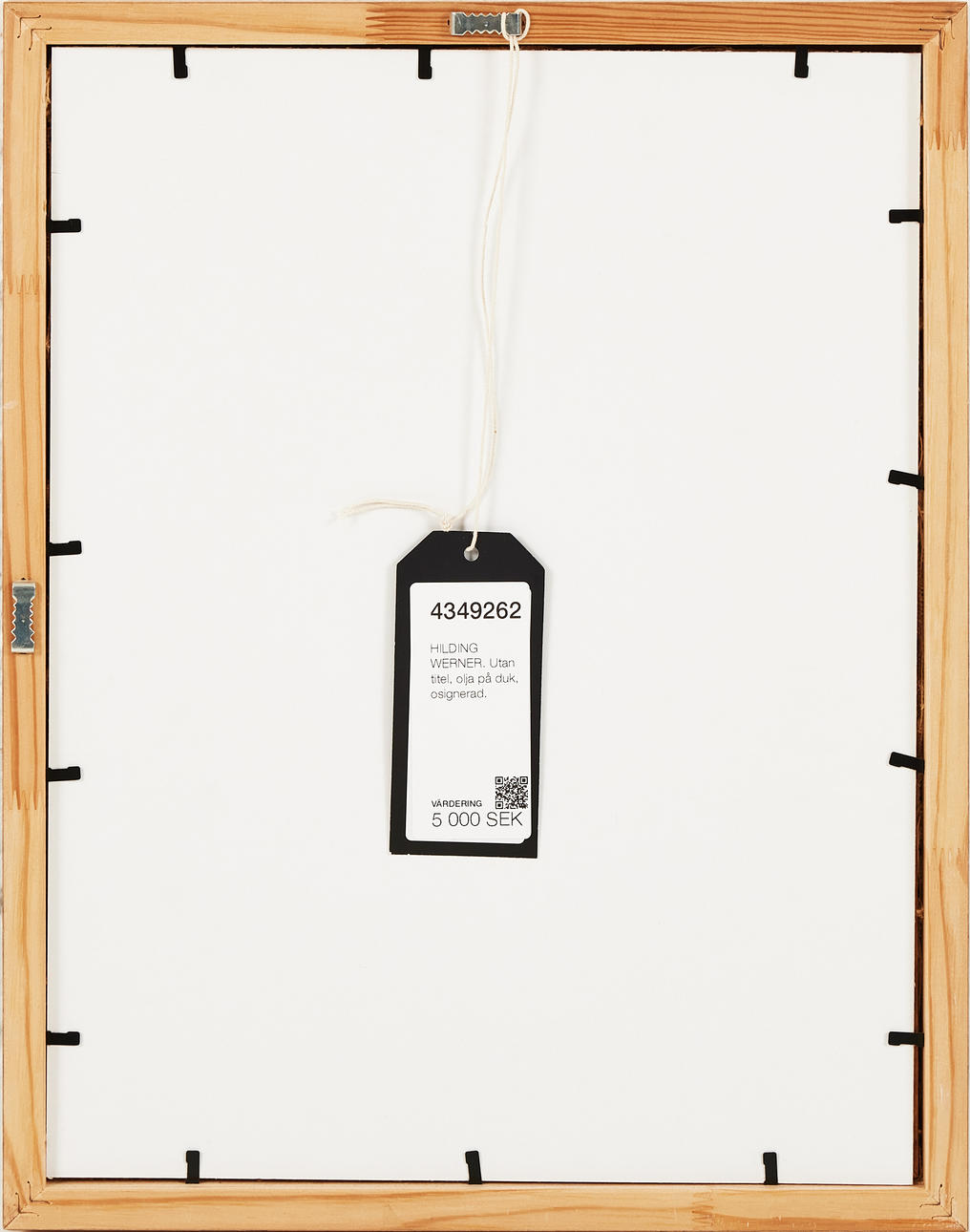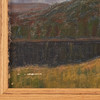
HILDING WERNER. Untitled, oil on canvas, unsigned.
This auction is closed, but maybe you like the following items?


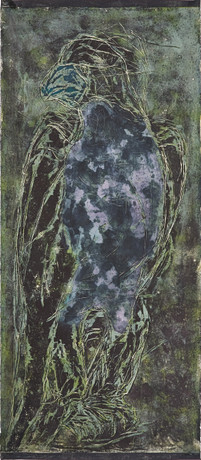

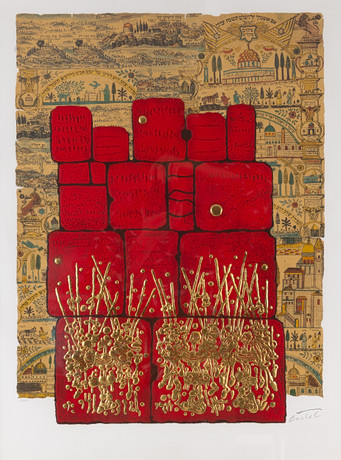
Description
Mountain Landscape. 38x29 cm excl. wooden frame.
Provenance:
The Artist's Family
The artist's family.
Hilding Werner (1880-1944) belongs to one of those artists whose peculiar expression is very recognizable. He was born, lived and died in his beloved Värmland, which came to play a central role in his art. Werner's education began in Althin's painting school and he also attended the Artists' Association's School of Painting for a year. To earn money, he came to contribute as a caricaturist to the magazine “Nya Nisse”. In 1905 Werner went on his only trip abroad to Holland and soon after returning home he acquired a studio at Hammartjärnet in Värmland where he also lived until his death. Through his participation in the artists' association “De fri”, he participated in group exhibitions with them until 1912, and he also exhibited at other collective exhibitions during his years. He never had a solo exhibition during his lifetime and it was only at the Värmland Museum in 1946 that his art was collected and it was possible to get an overview of his life's work.
But back to Värmland around 1910, when Gustaf Fjaestad's colony on Lake Racken had become well established and began to make an imprint in its contemporary times. Hilding Werner worked very much on his snow painting, strongly influenced by Fjaestad, but his contour action came to move towards red sharp tones in contrast to Fjaestad's more blue and soft tones. Together with his role model and artist Bror Lindh, Werner visited another Värmland artist - Otto Hesselbom. And with this meeting Werner came to find “his” format - the sweeping views in widescreen that Hesselbom worked on in, among others, “Our Land” (1902). Werner took his impressions with him and immediately began to translate his view of the Glafsfjorden into evocative paintings in an evening mood or a night's rest. He became increasingly cut off from society and his circle of motives came to be influenced by this. The portraits found are often of family members or self-portraits. This life path of returning to one's homeland, working shielded and experimenting with one's expression is perhaps recognisable from another contemporary from Värmland, the artist Stefan Johansson (1876-1955). Much of Johansson's character is found in this landscape painting from Värmland. The painting comes directly from the artist's family.
Condition
Wear and minor paint loss.
Resale right
Artist/designer
Do you have something similar to sell? Get your items valued free of charge!
Bidding
Have your item valued free of charge.
Bid history
| 7 A | 20 Jun, 10:57 | 427 EUR |
| 8 | 20 Jun, 10:57 | 410 EUR |
| 7 A | 20 Jun, 10:55 | 392 EUR |
| Show all 14 bids | ||
Description
Mountain Landscape. 38x29 cm excl. wooden frame.
Provenance:
The Artist's Family
The artist's family.
Hilding Werner (1880-1944) belongs to one of those artists whose peculiar expression is very recognizable. He was born, lived and died in his beloved Värmland, which came to play a central role in his art. Werner's education began in Althin's painting school and he also attended the Artists' Association's School of Painting for a year. To earn money, he came to contribute as a caricaturist to the magazine “Nya Nisse”. In 1905 Werner went on his only trip abroad to Holland and soon after returning home he acquired a studio at Hammartjärnet in Värmland where he also lived until his death. Through his participation in the artists' association “De fri”, he participated in group exhibitions with them until 1912, and he also exhibited at other collective exhibitions during his years. He never had a solo exhibition during his lifetime and it was only at the Värmland Museum in 1946 that his art was collected and it was possible to get an overview of his life's work.
But back to Värmland around 1910, when Gustaf Fjaestad's colony on Lake Racken had become well established and began to make an imprint in its contemporary times. Hilding Werner worked very much on his snow painting, strongly influenced by Fjaestad, but his contour action came to move towards red sharp tones in contrast to Fjaestad's more blue and soft tones. Together with his role model and artist Bror Lindh, Werner visited another Värmland artist - Otto Hesselbom. And with this meeting Werner came to find “his” format - the sweeping views in widescreen that Hesselbom worked on in, among others, “Our Land” (1902). Werner took his impressions with him and immediately began to translate his view of the Glafsfjorden into evocative paintings in an evening mood or a night's rest. He became increasingly cut off from society and his circle of motives came to be influenced by this. The portraits found are often of family members or self-portraits. This life path of returning to one's homeland, working shielded and experimenting with one's expression is perhaps recognisable from another contemporary from Värmland, the artist Stefan Johansson (1876-1955). Much of Johansson's character is found in this landscape painting from Värmland. The painting comes directly from the artist's family.
Condition
Wear and minor paint loss.
Resale right
Artist/designer
Do you have something similar to sell? Get your items valued free of charge!
Payment options for this item
Payment cards
Delivery
: Provide your locationInfo temporarily unavailableLoading…Provide your location to see transport options and prices.
Oops! Something went wrong.
Please try again in a moment. If it still doesn't work, contact support.

